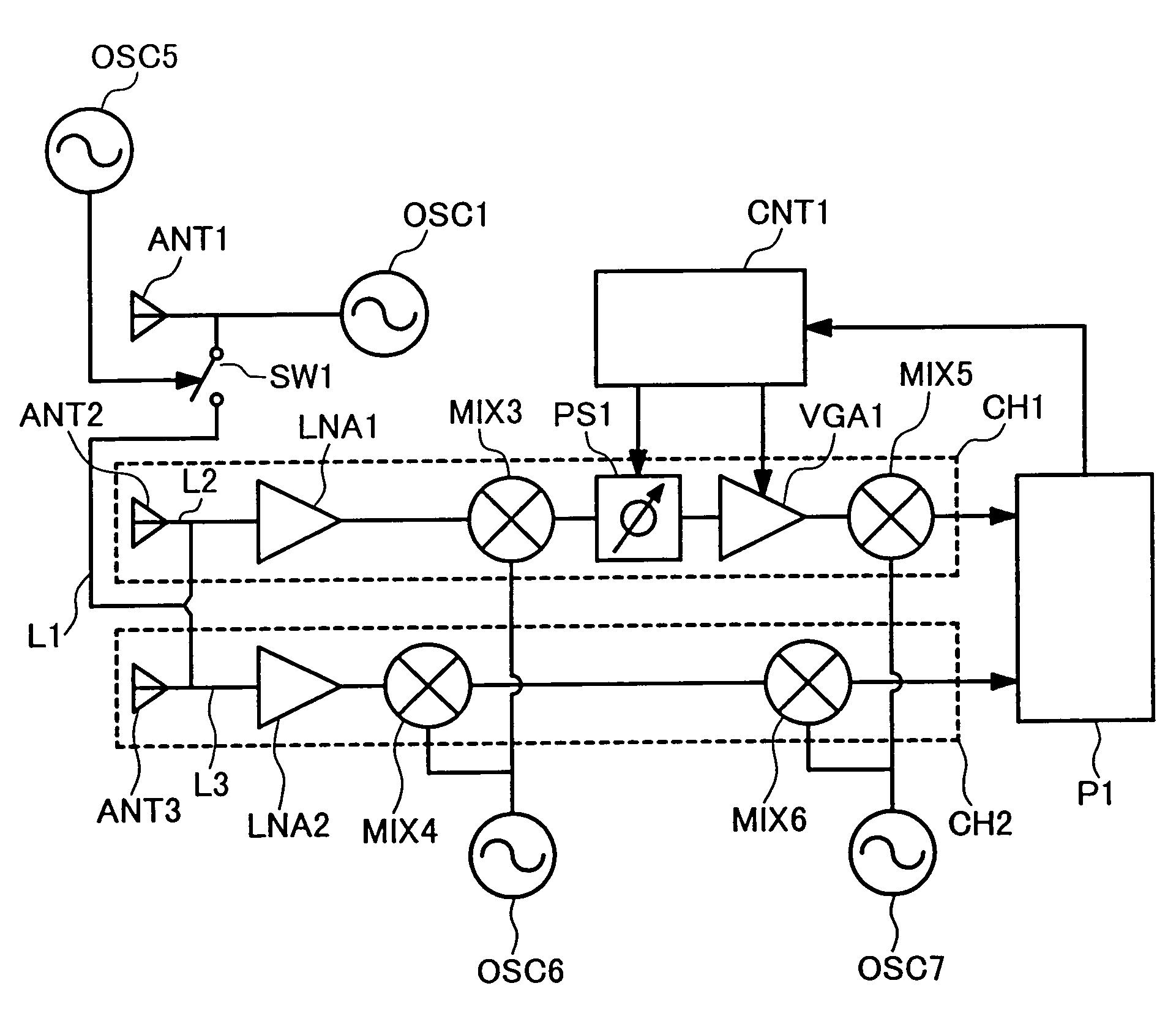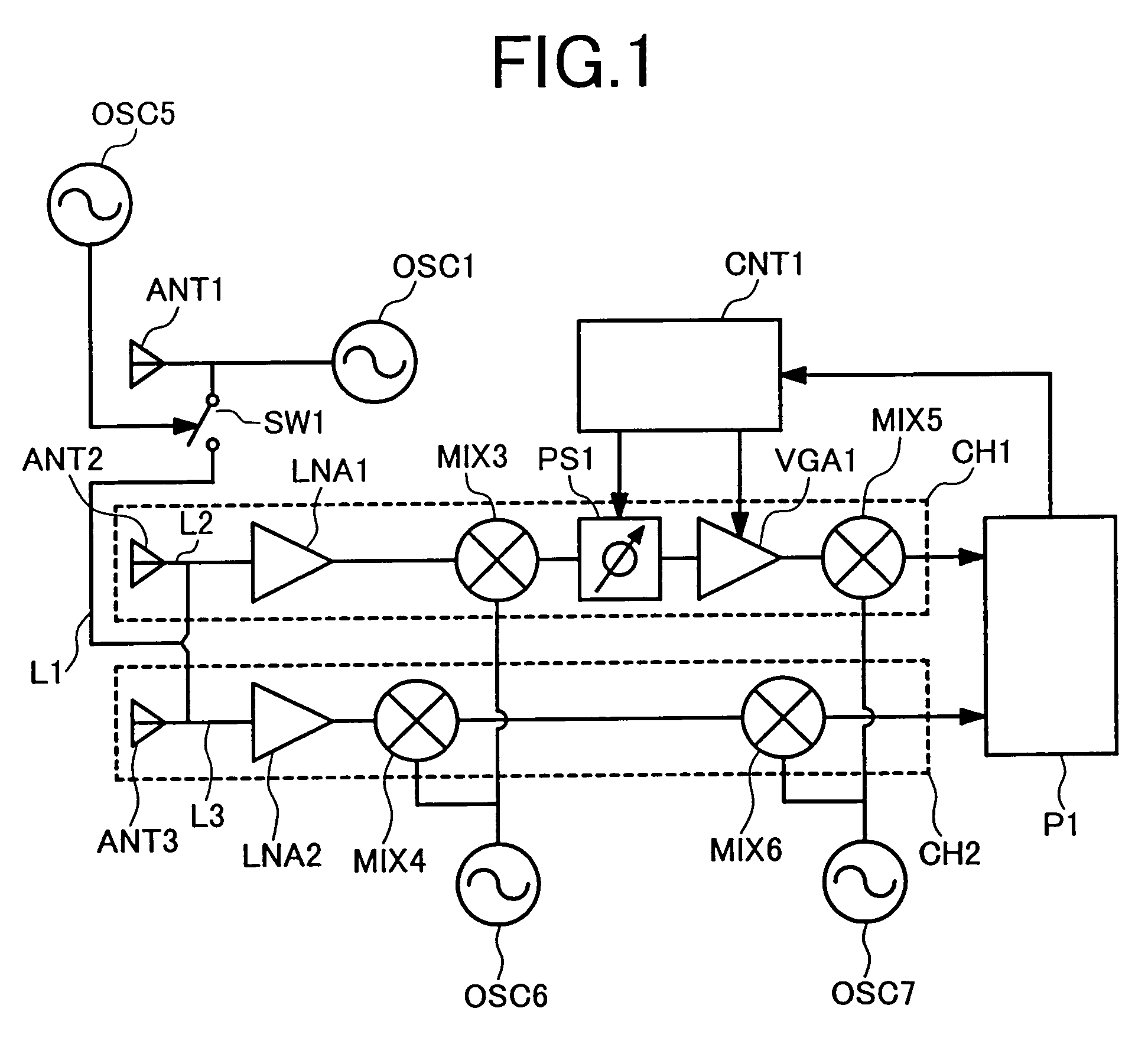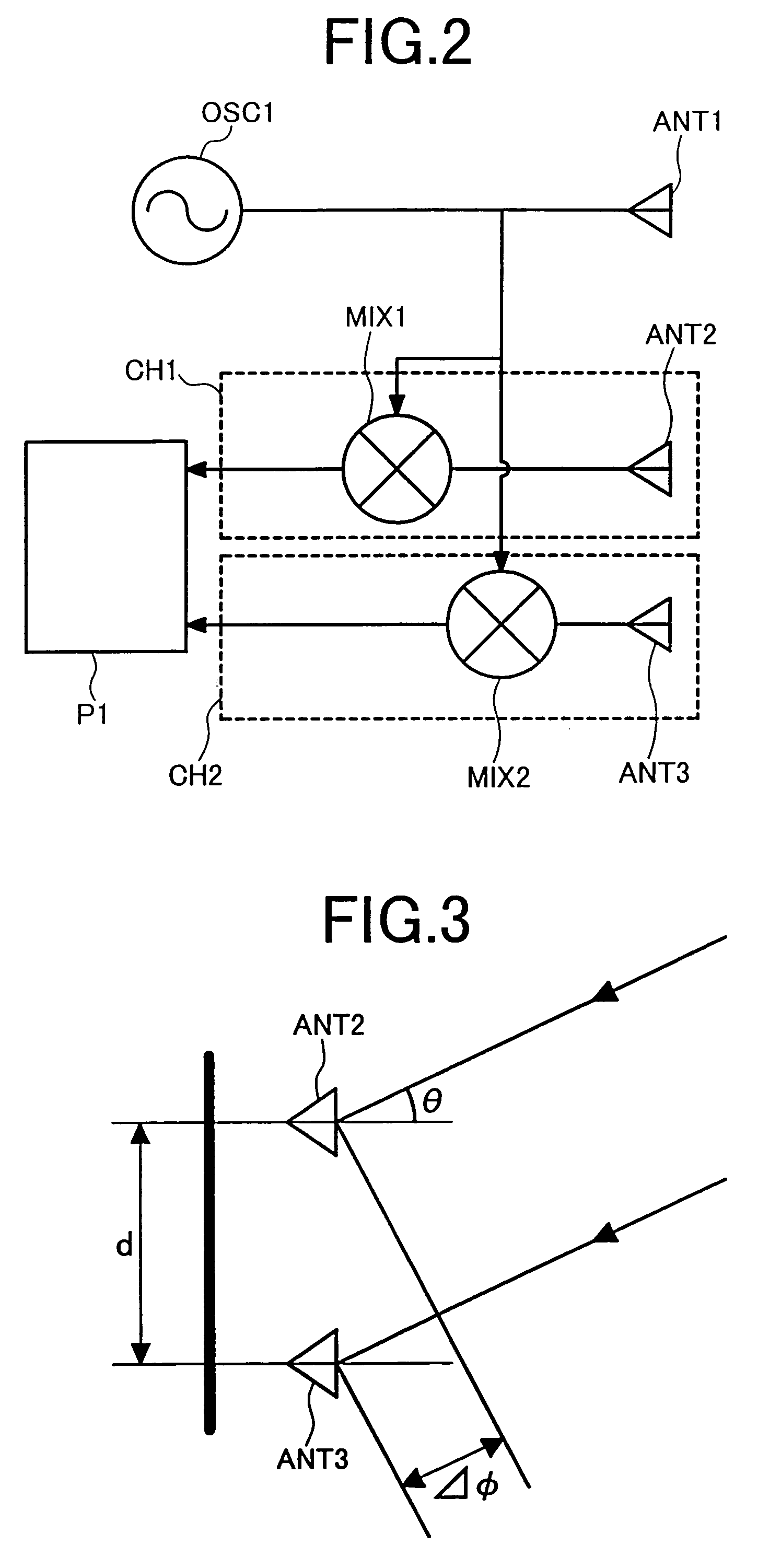Monopulse radar system
a radar system and monopulse technology, applied in the field of monopulse radar system, can solve the problems of increasing the cost of parts used in such ultra-high frequency, phase error or amplitude error, and the inability to accurately calibrate the
- Summary
- Abstract
- Description
- Claims
- Application Information
AI Technical Summary
Benefits of technology
Problems solved by technology
Method used
Image
Examples
Embodiment Construction
[0038]Preferred embodiments of the present invention will hereinafter be described with reference to the accompanying drawings.
[0039]FIG. 1 is a block diagram showing a configuration of a first embodiment of a monopulse radar system according to the present invention. The present embodiment is a monopulse radar system which has a transmitting antenna ANT1, and two receiving antennas ANT2 and ANT3 and which radiates or emits a transmit signal from the transmitting antenna ANT1, receives a signal obtained by allowing the transmit signal to be reflected by a target, with the receiving antennas ANT2 and ANT3, and detects an azimuth angle of its target according to signal processing. The monopulse radar system includes a signal transmission line L1 for calibration connected from an oscillator OSC1 to the transmitting antenna ANT1, from which part of the transmit signal is supplied to each of signal transmission lines L2 and L3 connected to the receiving antennas ANT2 and ANT3 as a signal...
PUM
 Login to View More
Login to View More Abstract
Description
Claims
Application Information
 Login to View More
Login to View More - R&D
- Intellectual Property
- Life Sciences
- Materials
- Tech Scout
- Unparalleled Data Quality
- Higher Quality Content
- 60% Fewer Hallucinations
Browse by: Latest US Patents, China's latest patents, Technical Efficacy Thesaurus, Application Domain, Technology Topic, Popular Technical Reports.
© 2025 PatSnap. All rights reserved.Legal|Privacy policy|Modern Slavery Act Transparency Statement|Sitemap|About US| Contact US: help@patsnap.com



